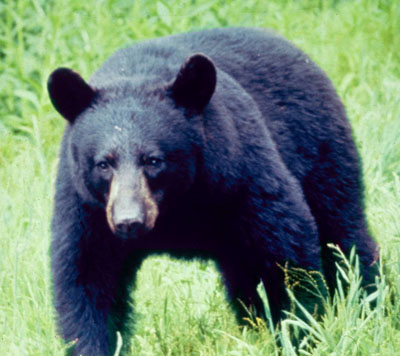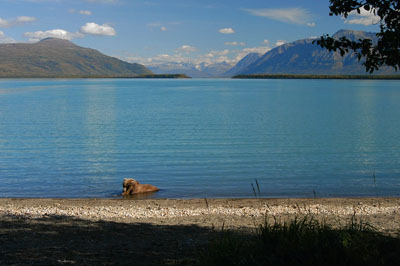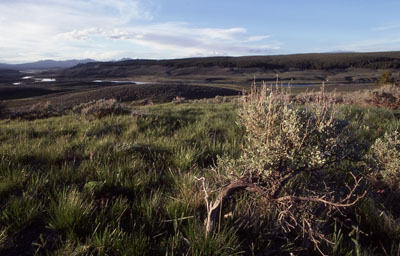
Bear attacks on decline, but risks remain
Imagine wandering along a beautiful creek on a hot summer day. Your son is playing near the water and as the day is drawing to an end. The scene couldn’t be more idyllic.
Then, suddenly, a young black bear appears out of nowhere and starts to attack your child.
While this horrific situation may seem far-fetched it is precisely what happened in August 2008 in Great Smoky Mountains National Park in East Tennessee.
| Click on the video at right to view a slideshow about bear attacks in national parks prepared by writer Patrick Riley. Photos courtesy of the National Park Service and U.S. Geological Survey. |
“His father pulled the bear off the boy and pretty much saved the boy’s life,” said wildlife biologist Bill Stiver. “He ended up in the hospital with some bite wounds on his head and neck and it could’ve been fatal if it wasn’t for his father.”
But Stiver, who has been working at Great Smoky Mountains National Park for 20 years, puts the reality of bear attacks into perspective when he says it is unlikely such an attack could happen.
“You’re much more likely to get killed in your car driving to this park or trying to get to this park than you are ever to be attacked by a black bear,” he said.
The fact of the matter is that bear attacks in national parks across the U.S. have actually been declining over the past years despite the fact that the number of bears and tourists in parks has been rising.
“The number of injuries has actually decreased,” explained bear management biologist Kerry Gunther, who works in Yellowstone National Park. He points out that more than 3.6 million people visited the park last year, but the park only averages one attack per year.
 |
Black bears are the only bears indigenous to Great Smoky Mountains National Park. Next, Katmai National Park and Preserve in Alaska is known to have one of the highest concentrations of brown bears on earth. Last, Yellowstone National Park is one of the only areas south of Canada that still has large grizzly bear populations (Photo by J. Schmidt, 1977, photos courtesy of National Park Service). |
Chief Ranger Neal Labrie from Katmai National Park and Preserve underlines this notion that bear attacks are a rarity when he notes that the park in Alaska, an area that is known to have the highest concentration of brown bears on earth, only has had one documented attack ever.
Stiver, Gunther and Labrie attribute this to the emphasis that has been put on educating park visitors.
“We’ve got a lot of information out and available for visitors on what to do if you encounter a bear…. We have a podcast that’s available on safety in bear country. We have a flyer on what to do if you encounter a bear,” said Stiver.
Generally speaking, it is always best to avoid bears, but in some cases it is too late for that and then the best  strategy to employ depends on the type of bear one is encountering and the animal’s motives.
strategy to employ depends on the type of bear one is encountering and the animal’s motives.
“There is some behavior that a lot of people don’t really understand about bears and that is the difference between what would be an offensive attack and a defensive attack. For black bears, a defensive attack is pretty rare. But for grizzly bears they are much more defensive and so that’s why you read in the literature about playing dead with grizzly bears or brown bears because a lot of the attacks are thought to be defensive,” said Stiver.
“So once the threat is taking care of so to speak then the bear goes on. But with black bears, if they make physical contact with you, you’re supposed to fight back with everything you got, because more than likely it’s a predatory, an offensive attack.”
Besides utilizing educational tools in order to prevent bear attacks, many parks have also adopted additional measures.
“We have bear-proof garbage cans and dumpsters and very strict regulations about how people can store food and garbage while they’re here. So, a big goal of our plan is to prevent bears from becoming conditioned,” said Gunther.
But sometimes all precautionary measures fail and the park organization must take more drastic actions.
Bears that have attacked humans are often times euthanized and then sent off for testing to see if there were any abnormalities that led to the attack. Other times bears that invade human space, especially food-conditioned animals, can be scared away using beanbags and rubber buckshots or relocated.
“ Simply the process of being captured and handled is a pretty negative experience for the animal and a lot of times just doing that with some follow-up work, trying to figure out what it’s trying to get, those kind of things, have been pretty successful in keeping bears wild,” explained Stiver.
Simply the process of being captured and handled is a pretty negative experience for the animal and a lot of times just doing that with some follow-up work, trying to figure out what it’s trying to get, those kind of things, have been pretty successful in keeping bears wild,” explained Stiver.
But although parks across the country are constantly looking for new ways to limit negative interactions between bears and humans, ultimately it is still up to the visitors to make sound decisions in regards to the wildlife surrounding them.
After all it is us humans entering the bears’ domain.
Not the other way around.
How to be Safe in Bear Country
- Respect a bear’s personal space.
- Travel with others while in bear country.
- Consistently use the same viewing areas.
- Access viewing areas in a consistent manner that minimizes disturbance.
- Minimize disturbance of bears when viewing them.
- Promote predictable human behavior (do all you can do to be seen and heard by bears).
- Avoid displacing and food conditioning bears (keep food and similar items secured in bear resistant containers).
- Make sure bears do not link people with food (avoid having them get fish from you or other items from your campsite).
- Discourage curious or aggressive bears from approaching you.
- Do not run away or advance on the bear.
- Above all: Do all you can do to be seen and heard to avoid surprising bears.
Safety recommendations courtesy of Chief Ranger Neal Labrie from Katmai National Park and Preserve in Alaska.
Great Smoky Mountains podcast (courtesy of Bill Stiver, Great Smoky Mountains National Park):
http://www.thegreatsmokymountains.org/hike_smokies_challenge_videos/hikethesmokies_2_wildlife.html.

Comments are Closed